The unspoken damage of boxing
Boxers know they risk injury in the ring. But there’s a more insidious danger they don’t often talk about: the long-term brain damage that repeated blows to the head can cause. Lyra McKee meets the families who are breaking the silence
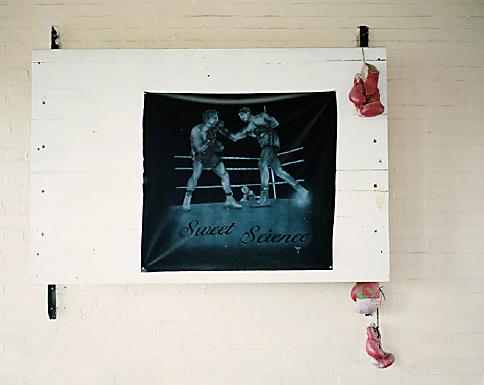
The footage is nearly 40 years old but you can see him clearly: pasty, red-haired, more Irish-looking than Italian.
“Some of you may have observed the knee brace on the left knee of Johnny Lira,” says the announcer, Howard Cosell. “That is occasioned by the fact that there are pellets in that knee. Remember I told you Lira had a troubled youth? The pellets are the result of being a participant in a gang war.” He pauses. “Just recording the fact.”
Lira, a fierce, determined fighter who has served prison time, darts round the ring as he and the Venezuelan Ernesto Espana exchange blows. Espana is using dark brown Mexican gloves, with stitches sewn in where the leather connects with the skin. In round nine, they will rip into Lira’s cheek and tear a gash above his right eye so bad that his face is doused in blood. But he doesn’t know this yet. It’s only round six.
It’s an evenly fought match up to this point, but things start to change in the seventh round. “And in a round like this, it seems to me, the more polished style of Espana becomes more visible,” says Cosell.
“Oh! That counter-right by Lira! Knocked Espana down!”
Lira’s friend Fred jumps on the table, screaming, as Al Capone’s ex-driver looks on. Ernesto Espana, the world lightweight champ, bested in the ring by an Italian-American street punk. The first knockdown of the fight.
Espana gets back up. “We will not be going to a station break,” Cosell says. The seventh round counts down: 15, 14, 13…
“Lira’s got a lifetime at stake here. You can understand the hunger in this young man. Boxing, as I said, turned his life around: the troubled youth, involved in gang wars, involved in crimes and then here he is, fighting for a championship!”
The bell rings.
“There can be no doubt about the scoring in that round. It was Johnny Lira’s round.”
In the next round, Espana fights back. He knocks Lira down towards the end. In round nine, both men continue to battle.
“But right there – Espana got through with the uppercut and you saw Lira’s head snap upward! A lot of blood gushing out now! The blood we had anticipated earlier, over Lira’s right eye, and Lira is in trouble!”
Watch the scene frame-by-frame and there it is: the point at which Lira’s brain must be bouncing around inside his skull, like a snapped elastic band. Concussion? Howard Cosell doesn’t realise it but he’s narrating the beginning of the end of Johnny Lira’s life.
The ringside doctor stops the fight. Espana wins by a technical knock-out.
But that was decades ago. The crowds are gone now. Cosell is long dead. Johnny’s screwed. He knows it. He’s forgetting things. He’s drinking too much. He’s paranoid, can’t control himself, to the point where, one day, he loses it with the teller in the bank and threatens to blow the place up. His speech is slurred. He’s increasingly reliant on the sign-language skills he picked up while training a young deaf boxer, David Davis, "the Silent Bomber" – whose career ended when he was injured in a car crash.
Jerry Lucieno has been Johnny’s best friend since childhood. They’ve worked together, boxed together – when Johnny needed bail money at 3am, it was Jerry he called. Now they’re in Jerry’s car, outside Johnny’s apartment, sorting out Johnny’s affairs.
“What’s going to happen to these guys that are pasta brains from taking hits?” Johnny asks Jerry. “You know, these boxers,” he continues, “everybody wants to make money on ’em and nobody puts anything into ’em. They just leave ’em at the roadside. And that’s not right!”
He’s talking as much about his own life as anyone else’s. His liver is failing. He’s 61 and running out of time. The boxing community in Chicago rallies round, holds a fundraiser for his medical bills, but when he dies, a few months later, he dies penniless.
When the dangers of boxing are discussed, it’s often about what can go wrong during a fight, incidents like the one during Barry McGuigan’s 1982 fight with Young Ali that left Ali in a coma from which he never recovered. In late 2015, Hamzah Aljahmi died in Ohio following his debut professional bout. In 2016, Scottish boxer Mike Towell died after a match in Glasgow, and English boxer Nick Blackwell was forced to retire after sustaining a head injury during a fight.
But the boxers this story is about haven’t died in the ring, but years later, when the bloodied noses and split lips have long since healed. At the time Johnny was fighting, it was called “Punch Drunk” syndrome. Now, it’s called chronic traumatic encephalopathy (CTE). And while boxers and their brains were instrumental in the research to define the disease, their contribution has, say their families, largely been forgotten.
*
It happens in a small town in western Canada. It starts years before it ends. Paranoia. Mood swings. Violence.
One night, he forgets where he left a piece of machinery. She talks him through it. They figure out that it must be in the next town, at the site of a construction job. He drives there. He calls on the way: “I know I’m here for a reason. I have my trailer hooked up to my truck, but I don’t know why I’m here.”
Another night, they’re having dinner at a friend’s house when they receive a phone call. Dayer*, their youngest son, has pulled a knife on Caiden*, their oldest. They go home.
She, Maryse, asks Dayer what happened. The boy is under extreme stress. A few days earlier, her husband, Curtis Hatch, waited for him behind a corner near their garage, jumped out, and tried to smother him. Her nephew saw and came running in: “Auntie, Uncle Curtis just grabbed Dayer and he’s hurting him.” Curtis was an ex-boxer, a three-time national champion; if she hadn’t got there, he might have killed him.
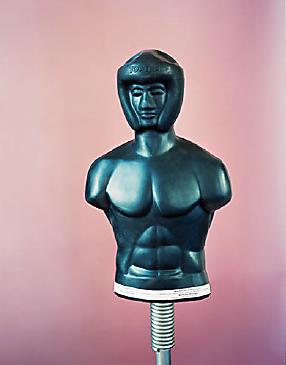
Curt walks over and interrupts. He tells Dayer, “When Social Services get here, I’m going to request that you be removed from our home.”
Dayer runs into his room and begins, literally, to climb the walls. Their nine-year-old daughter wraps her arms and legs around her father and pleads, “Daddy, please don’t do this.”
Maryse snaps. She grabs Curt’s arm and leads him across the kitchen into their bedroom. “You’re going to pack a bag,” she tells him.
“You’re kidding me, right?” he says. After the incident with Dayer, he had offered to leave. She said no. Dayer told her that he couldn’t be in the same house as his Dad. She told him it would be OK. He was soon going to winter camp for a few days. “I’ll make sure Dad stays away from you and by the time you get back, we’ll have some help. We’ll have some answers and it will be better.”
Three days later and it wasn’t better. She hadn’t been able to get help. “Pack a bag and leave,” she tells him.
He walks over to the walk-in closet in their bedroom. That’s weird, she thinks. Does he have a bag in there? She only realises what he’s doing as the gun comes into view. Too late to stop him shooting himself in the chest.
She dials 911. The operator tells her that help is on the way. Flash the lights on and off, they say. She does. Then a police officer’s voice breaks in on the line: “Get out of the house now!”
The house is a building site: they’re still finishing it. There’s no porch, so she picks up her daughter and leaves through the garage door. Later, a police officer confirms that he’s dead. She was too shocked to realise she’d heard two gunshots. He’d aimed the second at his head.
The death is declared a suicide, the final act of a man with a history of paranoid violent behaviour. It’s a textbook case: a man abuses and terrorises his family, then harms himself or them. Some men are just evil. But Maryse knows different. She knows something was wrong with his brain. She just needs to find out what.
*
Looking at mainstream press coverage of CTE, you would be forgiven for thinking it wasn’t a big problem in boxing – searches reveal the names of countless American footballers from the NFL, yet far fewer boxers.
The science is in its early stages: we know that CTE affects people with a history of concussion and repeated blows to the head, a group that includes everyone from domestic violence survivors to NFL players. It affects the brain, causing problems memory loss, slowness of movement and extreme rage.
If you follow the logic that CTE is caused by repeated blows to the head, you might expect legions of boxers queuing up to say they have it. They don’t seem to be coming forward. Either they’ve never heard of CTE or they don’t want to talk. For the boxers I approached, it seemed to be the latter: “I don’t want to talk about anything that’s going to damage boxing,” they’d say. Most others in the field I contacted, including gym trainers and officials, didn’t respond to requests for comment.
I began to understand why. Footballers have teams of people to look after them – physicians, nutritionists, agents – as do professional boxers. But most boxers are amateurs. While NFL players have managers taking care of the business side, amateur boxers – at least, those trying to turn pro – have to write to sponsors and other potential funders themselves. They are salespeople and boxing is a business. Brain diseases aren’t good for business and neither is talking about them.
But there’s one friend I know will talk. “I'm tellin’ you, you won’t find many victims,” he says, sweeping his hand across thin air, as if to emphasise the nothingness. Marty* is nearly six foot tall, with thickening stubble and broad shoulders. Sitting in a café in Belfast, he looks as if he is permanently on the verge of grabbing the next passing male and pulling him into a good-natured headlock.
Marty practically grew up ringside: sparring, training, fighting and, now, promoting. The sport was good to him: working-class, with no qualifications, he left school at 16 and learned how to do business by watching promoters do deals and oil the PR machine. It was war turned into theatre. Now, he’s an entrepreneur, with fingers in multiple pies across the events business. One of his more recent ideas was providing bands to weddings. You can’t go wrong with weddings, he tells me: “Everyone has one and they happen all year round.”
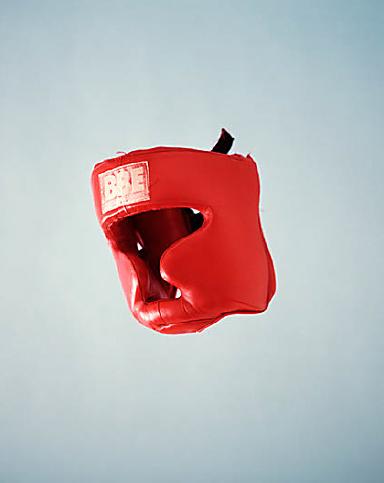
Boxing made him and, as far as he’s concerned, the benefits hugely outweigh the risks. “I was running a white-collar boxing event and one woman came to me and begged me to let her son in. He’d tried to kill himself multiple times and she had done everything she could... I let him in. And you know what? It saved his life.” The training kept him focused, he says, gave him purpose. “I still see him training in the gym sometimes.”
*
“I’m just shocked that no one wants to talk to us and then suddenly, someone comes from 5,000 miles away,” Nina Lira-Santiago says to me. There isn’t any great story to tell. An email to Lisa McHale, director of family relations at the Concussion Legacy Foundation – an organisation in New England dedicated to advancing research and knowledge of brain trauma in athletes and other at-risk groups – led me to the names of two boxers who’d suffered from CTE.
One of them was Johnny “World-Class Pug” Lira. In and out of jail in his youth, he’d turned his life around when a judge, Marvin Aspen, gave him a light punishment in return for a promise that he’d focus on his boxing. It had paid off. Now his daughter Nina is sitting in front of me.
Where we meet, a gym in the basement of a children’s home in Chicago, is where greats like Floyd Patterson and Muhammad Ali trained. Pictures of Ali line the walls. The gym’s owner, Glenn Leonard, a 6ft Rocky Balboa-lookalike, leads me in. He gave up his boxing career to work as a trainer. The only time he gets in the ring now is to spar.
“Can I ask why you couldn’t fight anymore?”
“Aw, well, you know, I was having headaches and, you know, it’s a warning signal.”
I turn up expecting just to meet Nina and a couple of family members but there are already six people inside. By the time I leave, I’ve interviewed at least 10, including Johnny’s sister, who had flown in from Salt Lake City.
Nina tells stories about her father as if the memories are like scenes from a disjointed cinema reel. Conversations with him that didn’t make sense, that just went round in circles. She tells a story her younger sister Gina told her: Johnny, a few years before he died, manic, as if he was back in the ring, facing an opponent, kicking Gina as she tried to push him out of her apartment door.
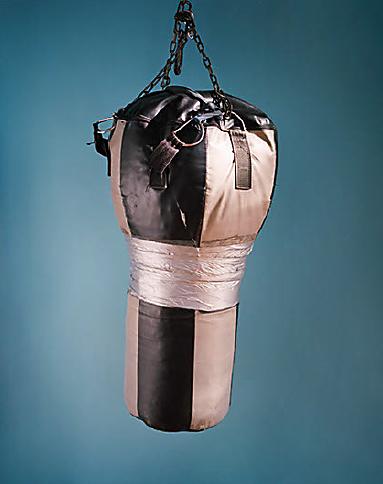
It wasn’t until Nina rang with a similar story – their father, defiant, in her house, refusing to leave when she’d told him to because he smelt of drink, offering her a fight – that it came out. “Dad was not even Dad,” Gina said. “He looked at me like I was some kind of stray animal on the street, like he was about to beat my ass. I’ve seen my Dad in rumbles. Dad looked at me like I was a dude.”
The same thing happened at Johnny’s sister Joanne’s house, where he had gone to pick up some of his belongings. “Out of nowhere, he got really violent with her,” Nina says.
Joanne’s son came out: “Uncle Johnny, step back,” he said. “You need to relax and calm down for a second.”
Days later, Nina spoke to her aunt about what had happened. “I’ve never ever been afraid of your father,” Joanne said, “Until that time.”
And then there was the bank. Thinking that his sister and his bank were trying to take his money, Johnny asked to withdraw it all, threatening to blow the building up in the process. “We know what his temper’s like,” Nina said at the time, “but this is something different. He's a ticking timebomb.”
*
The 2015 film Concussion, starring Will Smith, is loosely based on a series of true events. It tells the story of the study of CTE in NFL players by a Nigerian forensic pathologist called Bennet Omalu, and the League’s refusal to accept his findings.
In 2002, the body of an ex-NFL player, Mike Webster, arrived in Omalu’s office in Pittsburgh. An examination of Webster’s brain revealed something unusual. “I had to make sure the slides were Mike Webster’s slides,” Omalu said in a 2013 interview. “I looked again. I saw changes that shouldn’t be in a 50-year-old man’s brains, and also changes that shouldn’t be in a brain that looked normal.”
Viewers of the film would be forgiven for thinking that CTE is an NFL problem alone. But the first known description of the disease was in boxers, by a New Jersey doctor, Harrison Martland, who described the condition in a 1928 journal article called “Punch drunk”. In 1937, another doctor, JA Millspaugh, named the condition dementia pugilistica. It’s now accepted that this is a type of CTE.
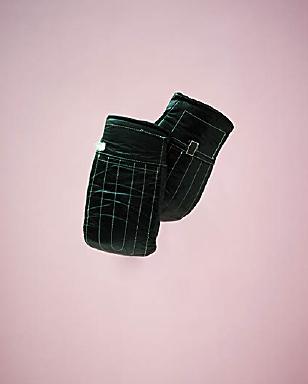
It’s not clear how many boxers the disease affects. But the accumulation of brain-related trauma from each fight leads over time to the release of a protein called tau, a common denominator in brain-related diseases, including Alzheimer’s. It spreads through the brain, eroding the functions associated with affected parts.
NFL players get concussion because of the blows to the head they sustain when charging at each other on the field. One study showed that even sub-concussive hits – blows that don’t cause concussion – can lead to significant brain damage in the long term. Yet, in boxing, the very aim is to land blows to the head. If anyone is at risk of the disease, it’s boxers. So why haven’t we heard more about them?
“The bottom line is most of these boxers are poor,” says Nina. “They have a lack of education, their families have a lack of education, so they can’t advocate for themselves.
“I’ve had so many arguments with certain research groups, telling them that in terms of spreading awareness about CTE among boxers, they need to be going into deprived communities because that’s where they are. We’ve talked to the boxing authorities too but… I don’t know,” she says. “I worked in public health; I know that the funding is there to make this happen. But there seems to be a lack of will.”
*
I think I’ll be fine until I walk in and see the sign on the metal doors that reads, “Feet first, head by door.” I can feel the blood drain from my face. Then one of the student interns lifts a brain out of its container and I have to choke down the vomit that has started to rise in my throat.
“I don’t mind brains,” says Don, the cheerful PR guy overseeing my visit. We’re standing in a morgue at a VA (veterans) hospital on the outskirts of Boston, a picturesque estate of rolling green fields and trees with buildings plopped in the middle. “I saw one when it was still in somebody's skull, in Iraq; he’d just had his head blown off.”
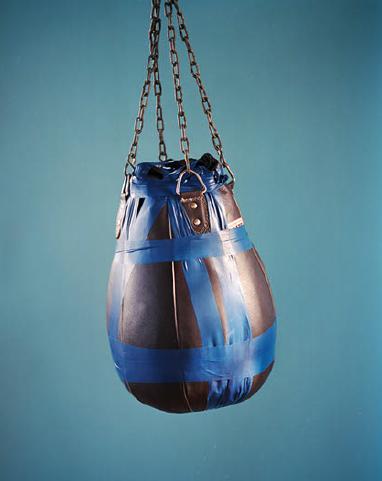
Ann McKee arrives, pulling on her white lab coat as she walks. Several critics have expressed dismay that McKee wasn’t featured in Concussion. An article in Wired said, “It’s a bit strange that the story centres on Omalu when Ann McKee at Boston University has been doing this research for just as long…”.
But it’s McKee’s name the families remember. When their loved ones’ brains are collected from the morgue and sent to Boston’s CTE Centre, it is her lab they end up in. It is she who dissects the tissue and, along with a colleague, rings each family to confirm that the reason the person they knew and loved had changed was CTE.
When brain sections are stained for the protein tau, it shows up as dark brown patches. McKee keeps boxes in front of her desk, with labels like “NFL players, aged 51–100”. In glass cases she has samples of their brains, documenting the erosion of their life: brown, discoloured stains which manifested themselves in the form of rage, fear, paranoia, memory loss and confusion.
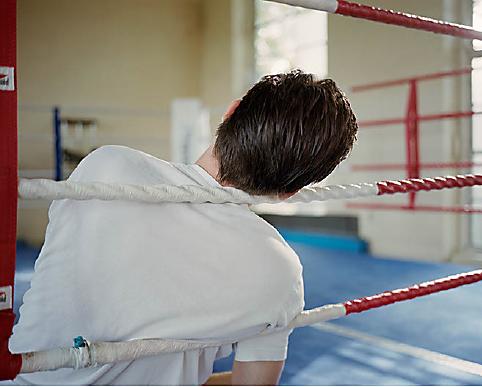
McKee takes me back to 2003, when her story started with a boxer called Paul Pender. A Marine veteran, he was a two-time world champion who’d fought Sugar Ray Robinson. Twenty years after his career ended, when he was in his 50s, his personality had started to change. He had become depressed and irritable, eventually unable to hold down his job. “That was when he first came here, to the VA, to be evaluated, and even though it didn’t seem typical, the diagnosis was Alzheimer’s disease.” He subsequently developed memory problems and confusion.
“When he died, I was doing the autopsies and I fully expected to see Alzheimer’s,” she says. “But he had anything but.” For one thing, his brain lacked beta amyloid plaques – another kind of protein that has to be present for a diagnosis of Alzheimer’s. And while tangles of tau protein are seen in both Alzheimer’s and CTE, in CTE, the tau tangles are always around blood vessels.
“He had a brain that… for a person who studies brains and makes that their life mission, I’d never seen anything like it. The tau pattern in this particular brain was extraordinary.”
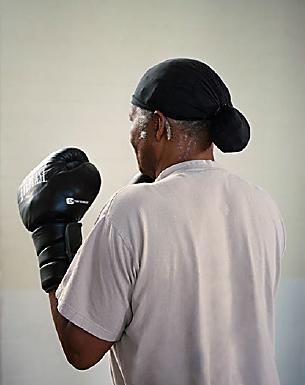
McKee tried, fruitlessly, to find the brains of other boxers. Then, one day, a brain turned up from someone who had also been diagnosed with Alzheimer’s. “I said, ‘Wow, this looks like Paul Pender’s brain;." She couldn’t see any history of boxing in the records, but called the family herself. “Did he ever do anything unusual or were there any sports he played?” she asked. Yes, they said, back in his 20s he was a professional boxer.
“The symptoms don’t often begin until many years after the person stops having exposure to repetitive head impacts,” says McKee’s colleague Robert Stern, from his office in Boston University’s main campus. “It’s something about that repetitive exposure that turns on the disease.”
The symptoms are insidious. As the disease progresses, Stern says, it affects a person in a number of ways. Cognitive capacities like memory, judgment, planning and organisation skills, can falter. Their mood and behaviour can change, with a risk of apathy, depression, mood swings, rage, aggression and loss of self-control. And they can develop problems with motor functioning: stiffness or slowness of movement, tremors, and limited facial expressions. “What’s interesting,” he says, “is that [limited facial expressions] have always been a common part of what’s seen in boxers but we very rarely see it in American football players. We’re trying to figure that out.”
From research based on interviews with families and friends and by looking at medical records, Stern and McKee know there are two types of patients with CTE: those who initially present with behavioural issues, usually in their 30s, and those who initially have cognitive problems, typically beginning in their 50s, 60s and 70s. But it’s not clear why some boxers develop the disease and others don’t.
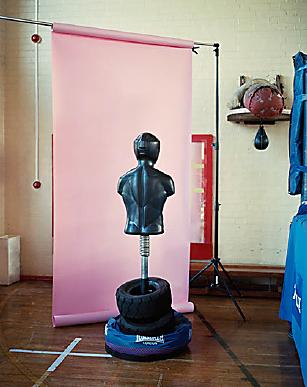
“I don’t think many people will argue that smoking [doesn’t] cause lung cancer,” says Stern. “But does that mean everyone who smokes will get lung cancer? Obviously not… [It’s the] same thing with repetitive head impacts. Some people with that history seem to get CTE. Not everyone.”
But everyone who has ever had the disease has one thing in common, he says: a history of repetitive impacts to the brain.
“I used to say that we’re in the infancy of our scientific knowledge of CTE,” says Stern. “Now I think we’re in the toddlerhood… we still don’t know a lot.” The biggest problem facing researchers is that the disease can only be diagnosed post-mortem. Until they figure out how to diagnose CTE during life, he says, they can’t do the kind of studies that will give them these answers. It’s the current focus of his research.
*
“I can tell it’s taken its toll on me,” he said to Jerry. “I can still feel the punches sometimes.” A few months after their conversation in Jerry’s car, Johnny Lira was dead. The obituaries talked about the “World-Class Pug” and the almost world champ. None mentioned the reality of his later life, the slurred speech or the inability to control himself or his drinking.
While some members of Johnny’s circle – and even Johnny himself at times – had begun to suspect that something was wrong with his brain, it was only after his death that Nina could connect the dots. An examination of his brain by McKee confirmed that he’d been suffering from CTE.
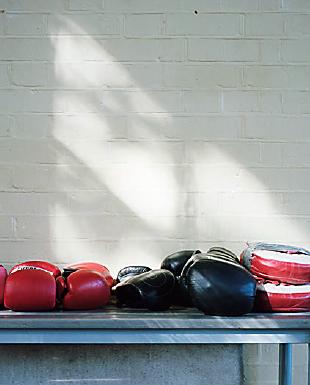
A few months after Curtis’s death, Maryse Hatch was in Salt Lake City when she came across an interview with the widow of an NFL player, Shane Dronett, who’d been diagnosed with CTE after his death at the age of 38. Like Curtis, in the years leading up to his death, he had become paranoid, thinking that people were driving around the house and following him. Again, like Curtis, he’d died of a self-inflicted gunshot wound.
“She said, ‘He had gone into the kitchen and as soon as I put my hand on the front door I heard it,’” Maryse remembers. “And when I read that the first time I was like… I could physically see her husband, I could see the look in his eyes. Everything. I just read that and I knew. Whatever he had, that was the same thing [that Curt had].”
She emailed Boston University. Luckily, the coroner in Canada had saved three pieces of Curtis’s brain, which they sent to Boston at her request. “I was so sure there was something wrong with Curt even though we knew it was a suicide,” she says. A full autopsy at her request hadn’t found anything. Then, in November, the phone call came from Boston.
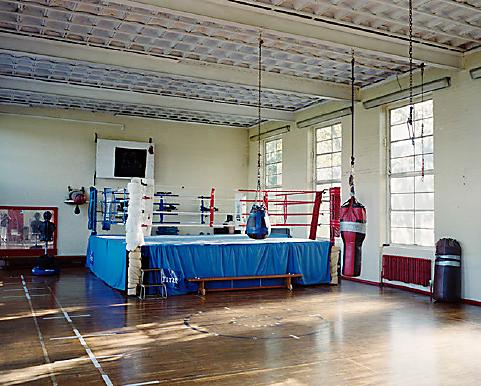
“It was literally a gift,” Maryse says. “To be told. To understand… I’d been so angry at him, and I can let some of that go.”
Knowing the truth about why a man changed so terrifyingly can help a family to mourn, to remember him the way they loved him. And the fans remember, too. In a museum 13 miles east of the town where Maryse and Curtis lived there is a small Sports Hall of Fame. In the section for 1993 there are nine photographs in brown frames. In the middle of the bottom row is a black-and-white shot of a young man in a white vest looking straight down the lens, his fists raised in a fighting stance. Below it says: “Curtis Hatch. Born February 1, 1970. Athlete – Boxing.”
* Some names have been changed. None of the people mentioned in this piece are shown in the photographs.
This is an edited version of a piece originally published by Wellcome on Mosaic. It is republished here under a Creative Commons licence
Join our commenting forum
Join thought-provoking conversations, follow other Independent readers and see their replies
Comments
Bookmark popover
Removed from bookmarks